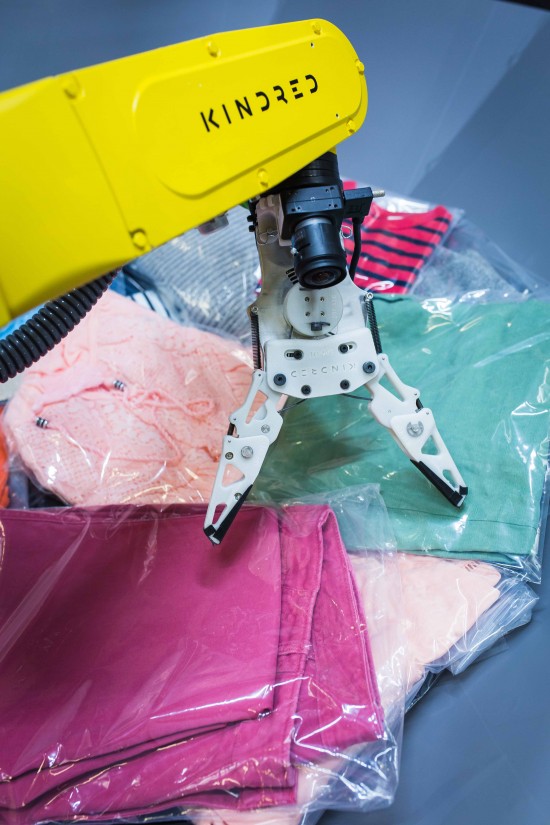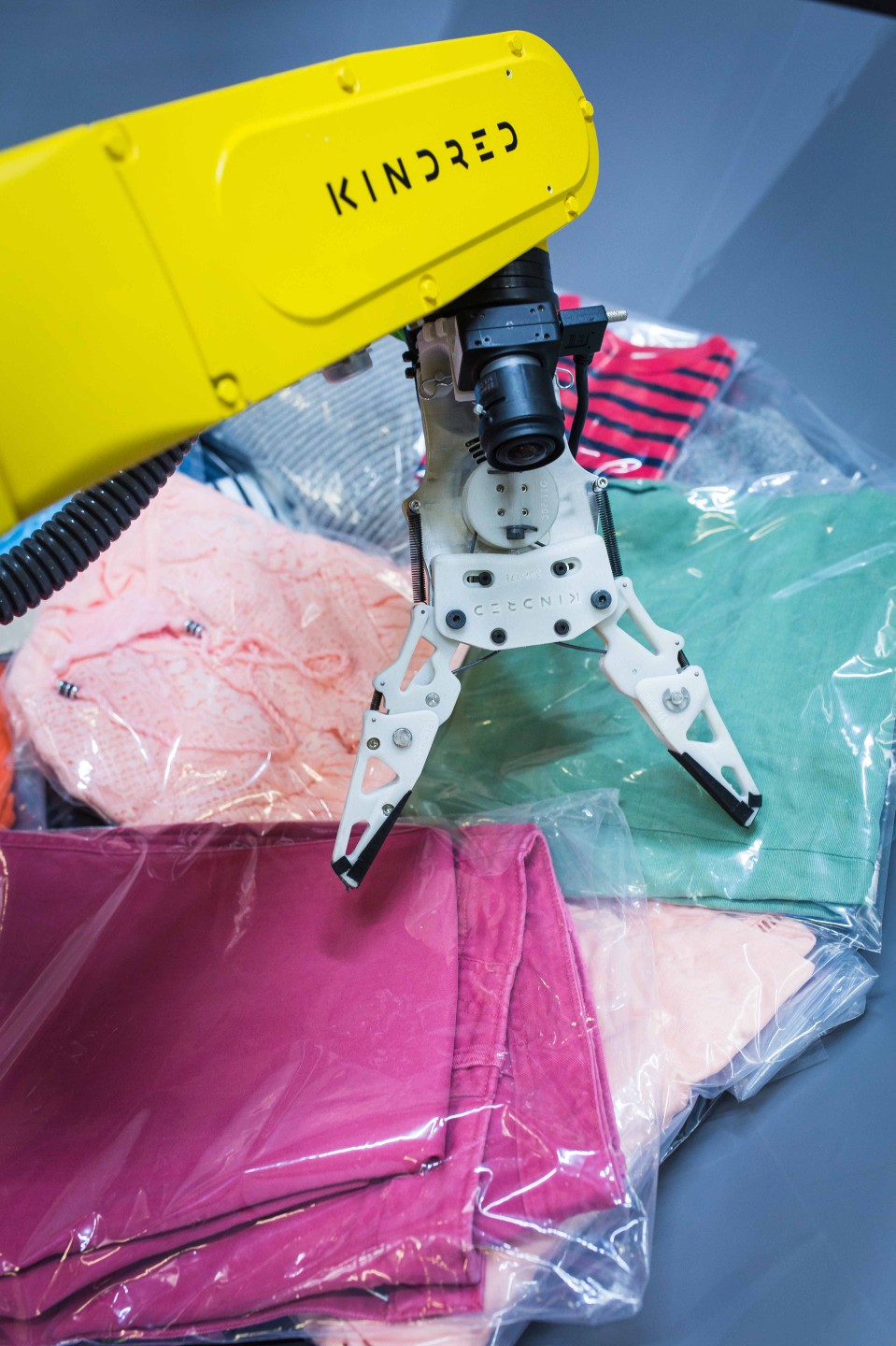Business Impact
Kindred AI is using human pilots to do what robots can’t
Meet the man controlling warehouse bots from thousands of miles away.



Humans are still far better at grasping and manipulating objects than even the best robot arms. At Kindred AI, people are helping the machines overcome that limitation—by becoming their pilots.
This article is part of a weekly series paired with our newsletter Clocking In, which covers the impact of emerging technology on the future of work. Sign up here—it’s free!
Kindred now employs six pilots, each of whom tele-operate robots in warehouses around North America. The team is led by software engineer Chris Hayes, who ensures a smooth sharing of duties between pilots and robots—people mainly control the robots’ gripping functions, while tasks like sorting the objects and positioning the arm for the next item are automated. While the pilots work, each movement is recorded and used to train Kindred’s machine-learning software on the best ways to grip. The pilots are, in essence, teaching the bots how to work on their own.
Kindred’s team of pilots may be small, but it is hiring. Demands on the pilots’ time have been increasing as Kindred has expanded its commitment to one of its primary clients, Gap.
So, what does your résumé need to look like if you want a job guiding robots?
For starters, you need to be an expert in something other than robot piloting. Hayes was originally recruited because of his skills as a VR artist and game designer, for example. “What initially attracted me to the role was that it involved VR,” he says.
Ironically, after starting the job, Hayes removed VR from the piloting setup and implemented the current control system, which involves a mouse that moves in three dimensions, plus multiple screens, a normal mouse, and a keyboard. Getting rid of VR is ergonomically easier on pilots during their eight-hour shifts, Hayes says, and allows the robot to use a wider range of motion—including some moves that are impossible for humans. And as the team’s head pilot, he still uses the interface he helped build.
“I think it’s a very important thing, using and trying what you are creating,” he says. “I have a daily sync-up with the pilots. I hear about their issues and things they are dealing with. I can hop on a machine here in the Bay Area myself and see if I can replicate the problems they are having.”
As for the future when pilots are no longer needed, Hayes says Kindred doesn’t plan to leave them unemployed. Apart from their normal shift work, pilots spend one to two hours a day on robotics, management, or graphic design projects. This is preparation for life after piloting. “The idea is definitely to automate as much as possible so [the robots] can function with as little pilot interference as possible,” says Hayes. “That’s why we are putting an emphasis on putting people into new roles. We know that this is temporary.”
Want to see other stories in our Jobs of the Future series? Check out our last article on the life of a wind turbine technician and subscribe to our newsletter Clocking In to get them delivered straight to your in-box.